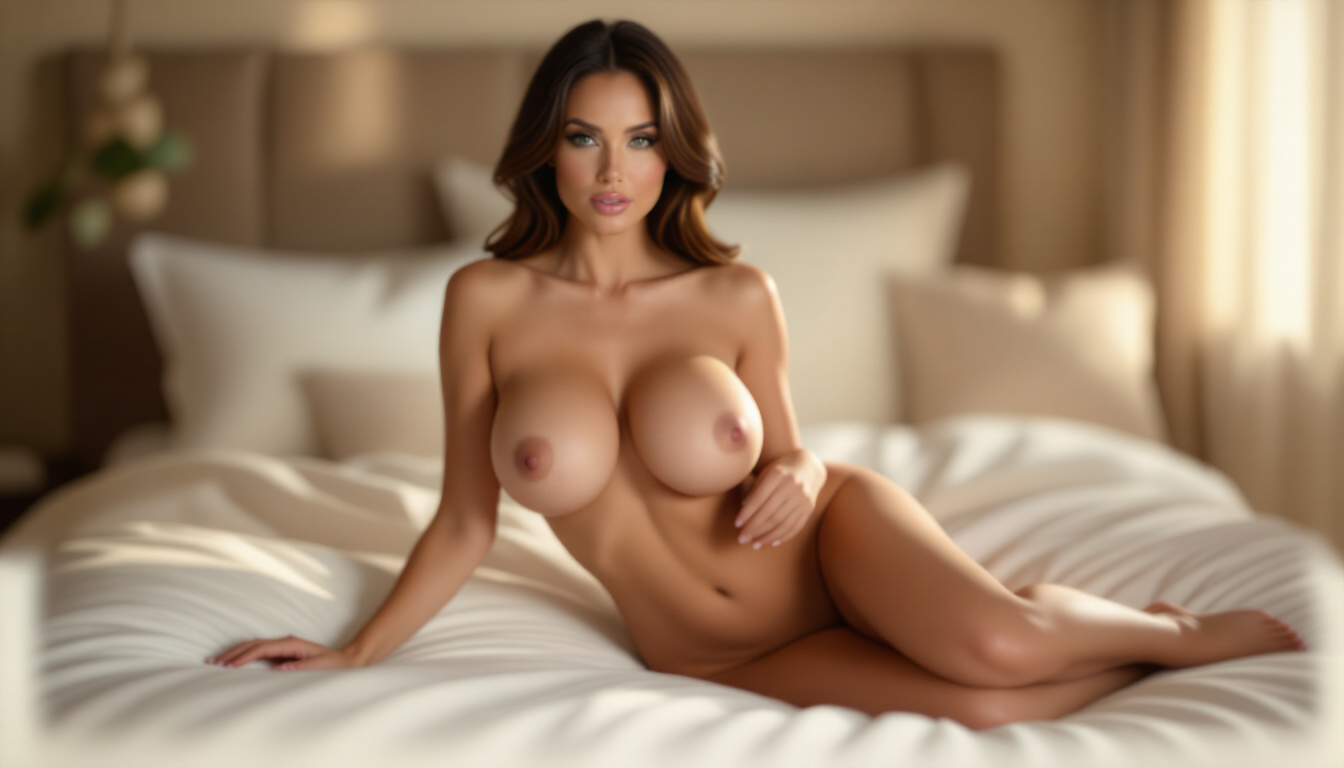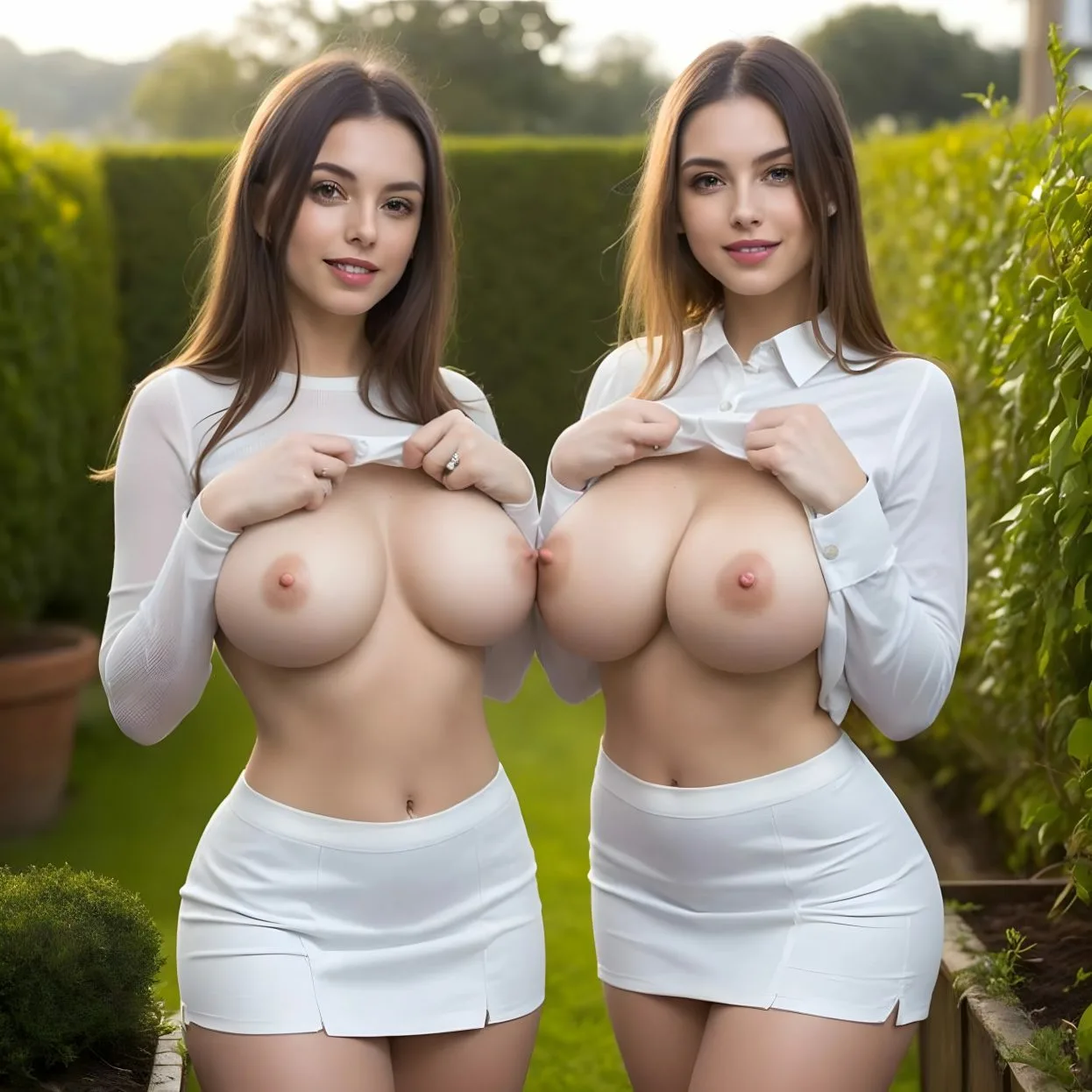AI Massive Boobs Porn Generator Images

Generate AI Content for Free
Explore AI-powered content generation tools with free access to unique experiences. Create personalized results effortlessly using cutting-edge technology.
TRY FOR FREEPeople are curious, confused, and sometimes downright obsessed with AI-generated adult images—specifically when it comes to the surreal and exaggerated world of “massive boobs” imagery. These tools don’t just pop out cartoon cleavage at random. They’re built on advanced tech, fine-tuned prompts, and subcultures that treat algorithmic erotica like an artform. But what are these image generators actually doing behind the scenes? And where do they fall short of the hype? It’s not as simple as typing “make a busty woman” and watching the fantasy come to life—though in some cases, honestly, it’s close.
As the demand for NSFW customization grows, these image tools now push limits: from anime-inspired exaggerations to photorealistic visuals that blur the line between fiction and the human body. In less than a minute, someone can create a digital “ideal” that influencers, models, and even nature can’t match. But not everything works like people expect. These AI programs have flaws, stretch visual logic, miss emotional authenticity—and, most of all, they raise big questions about what it really means to imagine bodies that only exist in code.
How Ai Massive Boobs Image Generators Actually Work
At the core, these generators don’t steal photos—they build them. Trained on huge, messy datasets scraped from the open internet, these engines rely on deep learning to understand every curve, shadow, wrinkle, or exaggeration tied to body parts. Most of them use diffusion models or open-source tech like Stable Diffusion and SDXL, which evolve through millions of iterations to reproduce visual cues with uncanny precision.
Here’s what they actually tap into:
- Semantic tagging: Understanding not just body parts, but the implied vibe of a prompt (“soft lighting”, “clothing stretch”).
- Prompt articulation: Small tweaks in wording radically change visual output.
- Variation ranges: Gives users access to sliders or code tweaks to customize size, shape, skin details, pose, and environment.
- Fantasy logic: Some models account for gravity, clothing tightness, and angles—even simulating effects like squish or bounce.
No human subjects are involved—it’s pure synthetic creation. There’s no cutting and pasting. These tools respond to what words mean “aesthetically” in context, not just what they mean literally. Want a sunlit busty girl on a mountainside? You’ll get it. Want her with glowing purple skin and anime eyes? They can do that too. The tech exists to execute these concepts down to the bead of sweat or hair highlight.
What Image Generators Don’t Actually Deliver
Despite sounding like digital sorcery, AI image generators have massive blind spots. They don’t truly “understand” realism. They don’t know what a human body feels like, how movement works, or where biology sets limits. Many users walk in expecting perfection—what they get often swings between uncanny, absurd, or hilariously broken anatomy.
Misconceptions that frustrate users:
| Expectation | Reality |
|---|---|
| Hyper-real bust physics | Stiff, symmetrical spheres or strange stretching |
| Perfect facial consistency | Faces can glitch or shift between generations |
| Ethical freedom | Still raises body bias and fantasy exploitation concerns |
| Total precision from prompts | Even detailed commands can misfire or get blocked |
AI isn’t intuitive. It doesn’t really “know” what turns people on—it predicts based on patterns. So if a prompt goes off the rails, the output often follows. And while these tools supposedly avoid copyright or revenge porn issues, critics argue they contribute to warped expectations, especially for younger users who mistake fantasy for the baseline.
Why Prompt Customization Becomes Addictive
Once people realize how much control they have, it’s hard to stop tweaking. Users compete to make images more extreme, lifelike, or emotionally charged. It becomes less like consuming porn and more like sculpting it, piece by pixel. Prompt engineering—layering in lighting, expression, textures, emotional cues—becomes a hobby of its own.
Most active prompt crafters use these tricks:
- Stacked descriptors like “massive++++ realistic” to overpower default limits
- Mixing NSFW and artistic prompts (“oil painting style,” “film grain”) to get by filters
- Borrowing tags or modifiers from prompt-sharing communities
- Trial/error obsession—adjusting one detail at a time to dial in their exact taste
There’s also a feedback loop at play—a user creates one variation, gets a dopamine hit, then wants to iterate again. Some report staying up all night tweaking their fantasy prompt until it hits just right. Not unlike chasing the perfect photo in real life, except here it’s limitless, private, and unfiltered.
When Fetish Prompts Spawn Entire Subcultures
These platforms don’t just spit out images. Over time, they’ve spawned micro-genres built around highly niche body fantasies. From expansion kinks to lactation, cartoon hybrids to fantasy creatures—specific phrases now generate entire visual languages that users build upon.
Examples of prompt-turned-passion-projects:
- Inflation art: Focused on hyperinflated anatomy, often surreal or balloon-like styling
- Lactation kink prompts: Combine romantic lighting or vintage styling for sensualization
- Cartoon oversize forms: Anime girls with impossible curves and disproportionate physics
These genres evolve fast. It’s no longer just “girl with big boobs”—now it’s “symmetrical lactating centaur with glowing skin shaders under a full moon.” As remix culture deepens, prompts are bundled, tagged, and circulated. The lines between art, kink, and satire get blurry in the community’s obsession with visual hyperbole.
Prompt Engineering Loopholes And Community Hacks
A major part of the draw comes from breaking rules. Tools like Replicate and Artbreeder NSFW offer nearly uncensored generations—but users have figured out how to outsmart more restrictive platforms through stealth tags and sneaky modifiers.
What’s trending now:
- Token overload: stacking phrases like “gigantic+++, extremely detailed, no blur, photoreal”
- NSFW filter evasion: using coded language like “top-heavy” or “fabric strain” to get past censors
Communities on Discord and niche subreddits share ways to unpack model architecture, bypass flagged words, or even tweak open-source models to disable filters altogether. Some groups develop mini-competitions: can you sneak the most explicit image past auto-moderation with clever phrasing?
The more limitations platforms try to impose, the more creative—and determined—the hackers get.
Cultural Reactions & Ethical Whiplash
Some people call it a revolution. Others call it escapism dressed up in code. AI porn generators that create massive, surreal, often impossibly proportioned female bodies have stirred up an emotional storm. On one hand, users light up with excitement—finally, a tool that does exactly what their fantasies demand. On the other, there’s a whisper of discomfort. Is this art, or is it wish fulfillment gone too far?
For a chunk of users, these tools represent freedom. They can build out their most taboo scenarios without involving real people. No judgment, no leaks, just fantasy made pixel-perfect. But sitting right next to that enthusiasm is something messier: unease. Some call it cartoon voyeurism. Others worry we’re rewiring how people experience intimacy entirely.
In digital corners you won’t find on mainstream TikTok, users talk about these AI tools as a way to reclaim non-normative bodies. Models with extra-wide hips, flattened bellies, or enormous sagging breasts get turned into art, pushed proudly into view. But it’s not unanimous praise. Others argue this wave just reinforces old patterns—fantasies rooted in male-gaze hypersexuality rather than reclamation.
Artists feel especially burned. They say their original work—faces, curves, even signature brushstrokes—gets ingested into datasets and spit out unlabeled by AI bots. Some creators call it theft, others see a blurry line between referencing and ripping off. In these spaces, who gets credit isn’t just a matter of ego—it’s tied deeply to consent, control, and compensation.
Underground Communities & Remix Culture
These tools don’t float out in the open—they live in code-heavy server vaults, niche Discords, and strange subreddits with oddly inviting names. If you’re unfamiliar, think tags like “ultra-stretch prompt” or “anime anatomy buster.” It sounds like a game, and in some ways, it is.
Frequent collabs happen not in quiet studios but in fast-paced threads where users remix each other’s creations. Imagine a challenge to “break physics” with breast size, or generate a believable six-breasted centaur that still maintains symmetry—people compete for clout, for laughs, and for bragging rights.
- Prompt remix duels featuring absurd body proportions for sport
- Contests where users rate anatomical believability vs. fantasy appeal
Then there’s the meme drift, where images lose their sexual purpose and become satire. Exaggerated models with balloon-like chests show up with captions like “her spine left the chat” or “gravity’s greatest hater.” Some leverage comedy to cope with the excess, turning what began as arousal into digital slapstick.
Psychological & Emotional Fallout
Being around extreme, AI-tailored visuals long enough starts to do something to a person. Some users say they don’t even notice how absurd their creations are until they close the tab and reenter real life. The gap between what’s real and what’s fantasy gets harder to track—and for some, that messes with self-image.
Skimming through pages of fantasy bodies with proportions none of us could physically match sometimes leads to comparison. Not everyone will react. But for those who already struggle with their body or sexual identity, the effect can numb or amplify that spiral. Does it rewire what’s hot? Maybe. Or maybe it just adds more noise to our already over-simulated heads.
It’s unclear if these visuals empower more than they desensitize. Some users claim the tools helped them break from sexual shame, allowing them to map desire openly for once. Others notice they only feel aroused by fantasy versions now—AI characters that don’t reject, don’t age, and never say no.
There’s one paradox everyone keeps talking about, though: how AI-generated porn became a shadow confessional. For tons of people, especially those exploring taboo ideas, typing it feels safer than saying it aloud. Prompts become political, personal, even spiritual. But is it shadow work or just hiding? The answer depends on who you ask—and how honest they are.
Best Free AI Tools







